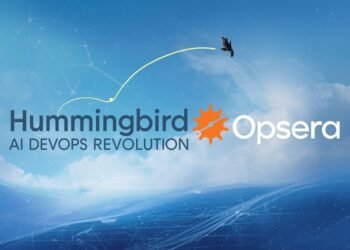Cloud gave us flexibility. AI is giving us precision.
In 2025, it’s no longer enough to spin up compute and hope the budget holds. Companies are getting laser-focused on usage, latency, cost, and resilience—and artificial intelligence is becoming the engine behind it all.
Whether you’re running on AWS, Azure, GCP, or a hybrid edge-cloud mesh, the future of cloud ops is intelligent, autonomous, and deeply optimized by AI.
Let’s break down how AI is transforming cloud infrastructure from the ground up.
1. Predictive Autoscaling Done Right
Autoscaling used to mean reacting to CPU or memory thresholds. But with AI?
🚀 You now get predictive autoscaling that adapts before traffic spikes—based on:
-
Historical usage trends
-
External events (marketing campaigns, product launches)
-
Time-of-day and day-of-week traffic patterns
-
Behavior of similar services across your stack
AI models forecast demand before it hits, allocating the perfect number of pods, nodes, or VMs in advance.
The result: better user experience and lower cloud bills.
2. AI-Powered Cost Governance
In 2025, CFOs are watching every cloud dollar.
Enter AI-driven FinOps. These tools:
-
Analyze historical cost anomalies
-
Detect zombie workloads and unused instances
-
Predict next month’s bill with confidence intervals
-
Recommend RI/Savings Plan purchases based on usage
-
Simulate pricing impacts across multi-cloud footprints
Tools like Kubecost, CloudZero, and Finout now use ML models to surface the 20% of infrastructure that causes 80% of cost surprises.
You can’t optimize what you don’t understand. AI gives you clarity, control, and accountability.
3. Intelligent Placement Across Regions and Providers
Latency, cost, compliance, carbon footprint—it all matters.
AI algorithms can now recommend optimal region placement based on:
-
Real-time latency to your users
-
Regional carbon emissions scores
-
Local regulations for data residency
-
Cost per GB stored or transferred
-
HA/DR scoring based on infrastructure health
Some orgs even let AI decide which cloud provider to deploy to for each service or workload—based on real-time conditions.
This is multi-cloud infrastructure as an intelligent service layer.
4. Smart Storage Tiering and Data Lifecycle
Not all data needs to live in hot storage forever.
AI now handles:
-
Auto-tagging data based on access frequency
-
Tiering cold, warm, and hot data across cloud storage classes
-
Predicting when to archive or delete data based on usage
-
Flagging compliance violations based on retention rules
Example: AI might move infrequently accessed logs from S3 Standard to S3 Glacier Deep Archive—and forecast savings over time.
This is data gravity meets budget sanity.
5. AI-Enhanced Cloud Security & Drift Detection
Misconfigurations are still the top cloud threat.
AI tools like Wiz, Orca, and Palo Alto Prisma Cloud can:
-
Detect insecure cloud resource configs (e.g., public buckets, over-permissioned IAM roles)
-
Analyze blast radius across cloud assets
-
Predict which misconfigs are actually exploitable
-
Continuously compare desired state vs. actual state for drift
-
Use anomaly detection to identify unexpected changes
And all this happens without drowning ops teams in noise—AI flags what matters and explains why.
Security teams stay focused, and attackers stay frustrated.
6. AI-Powered Incident Response and Root Cause Analysis
When things go sideways in the cloud, time is everything.
With AI, ops teams can:
-
Get root cause analysis in seconds (not hours)
-
See dependency graphs showing what broke and why
-
Run simulations to predict downstream impact
-
Trigger remediation actions (rollback, failover, rate limiting)
-
Auto-generate incident reports with summaries and timelines
Tools like Shoreline, PagerDuty AI Ops, and Datadog Watchdog bring generative AI into the war room.
Now even junior engineers can respond like battle-tested SREs.
7. Generative Infrastructure-as-Code
Yes babe—AI writes your Terraform now.
Tools like Terraform GPT, Pulumi AI, and AWS Q Developer CLI can:
-
Generate infrastructure-as-code based on natural language prompts
-
Auto-fix IaC security issues inline
-
Suggest optimizations (e.g., reserved vs. spot, EBS sizing)
-
Refactor monolithic stacks into reusable modules
-
Help enforce org-wide standards with AI policy assistants
It’s not just faster. It’s more consistent, safer, and scalable.
Final Word: AI Is the New Cloud Architect
In 2025, cloud infrastructure isn’t static—it’s alive.
AI is becoming the invisible brain behind every deployment, every scale-out event, every cost decision, and every security policy.
Cloud ops is no longer about dashboards and alerts.
It’s about intelligent, self-improving infrastructure that learns, adapts, and protects.
Want to stay competitive?
Then it’s time to start thinking not just about cloud scale—but cloud intelligence.


















